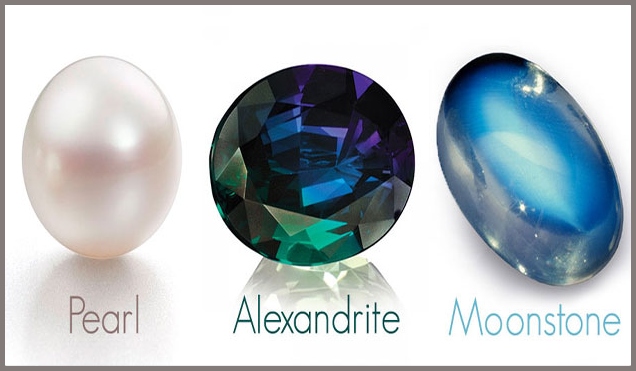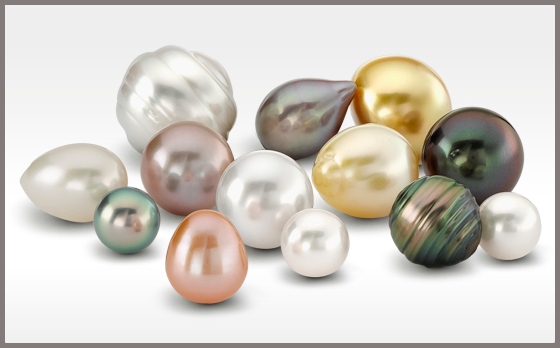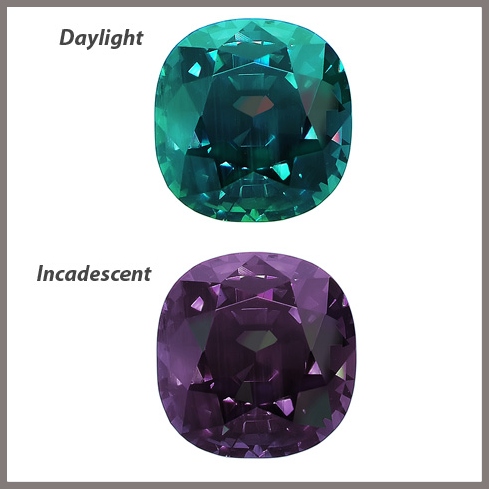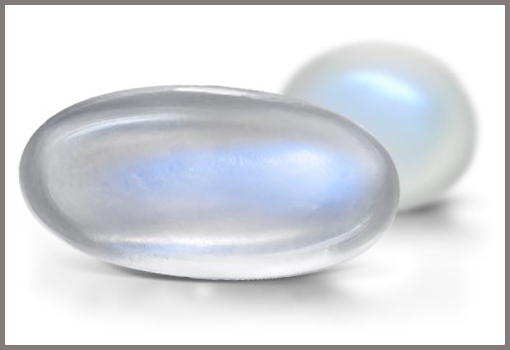June's Birthstone: Pearl, Moonstone & Alexandrite
June is one of only two months to have three birthstones associated with it. This gives the lucky people born in June a choice between pearl, alexandrite and moonstone. June's birthstone ranges from the creamy opalescent pearl and moonstone to the color changing chameleon alexandrite. Here are some fun facts about this diverse group of birthstones.
Pearls: The Queen of Jewels
- Our fascination with pearls is thousands of years old; no gemstone has been so loved for so long and by so. Discovered in the sarcophagus of a Persian Princess who died in 520 B.C was the oldest pearl jewelry in recorded history.
- Pearls are created by living organisms making them quite unique in this regard. Freshwater pearls form in a variety of species of freshwater mussels, which live in lakes, rivers and ponds. Most freshwater cultured pearls sold today come from China. Saltwater pearls, however, form within pearl oysters and are typically cultivated in protected lagoons. Most saltwater cultured pearls sold today come from Japan, China and Australia.
- In 1916, during a time in which pearls were still very valuable and rare, Jacques Cartier, one of the world's most renowned jewelers purchased his 5th Ave store by trading double-strand pearl necklace in exchange for the property. It was the most expensive pearl necklace in the world at the time, valued at over $1 million. It turned out to be a very shrewd business deal for Cartier because a few years later cultured pearls flooded the market and the price of natural pearls plummeted. When the necklace sold in 1956, it only fetched $150,000. Today the Cartier headquarters on 5th Ave in New York City is said to be worth billions.
Alexandrite: The Chameleon
- Alexandrite is one of the rarest and most expensive gemstones on the market today. It is rarer than diamonds and more costly than emeralds, rubies and sapphires. Discovered in 1830 in the Ural Mountains and named after Czar Alexander II.
- Alexandrite is part of the chrysoberyl family. It is a color changing gemstone, appearing blueish green in daylight and reddish purple under artificial light. Consequently, alexandrite is often described as an emerald by day and a ruby by night.
- Found in Bahia, Brazil in 1967 was the largest uncut gem-quality alexandrite weighting in at 122,540 carats. Additionally, the Smithsonian has the largest faceted, 66 carat alexandrite on display in their museum.
Moonstone: The Lover Stone
- Coveted throughout history and in many different ancient civilizations, moonstone has a long association with its namesake the moon. However, this luminous gemstone has a long history as a talisman for fertility, love and protection.
- Prized throughout history for its supposed healing properties; moonstone has been incorporated into healing therapy for the following health concerns:
- Reducing stress and anxiety
- Treating hormone imbalances
- Increased fertility
- Epileptic seizures
- Digestive issues
- Prevents sunstroke
- Stops nose bleeds
- Moonstone has found its way into jewelry throughout history, but it wasn't until the early 1900's that the stone became an important focal point in jewelry design. Great designers, such as Rene Lalique and Louis Comfort Tiffany, featured this gemstone in custom jewelry during the romantic Art Nouveau era.





